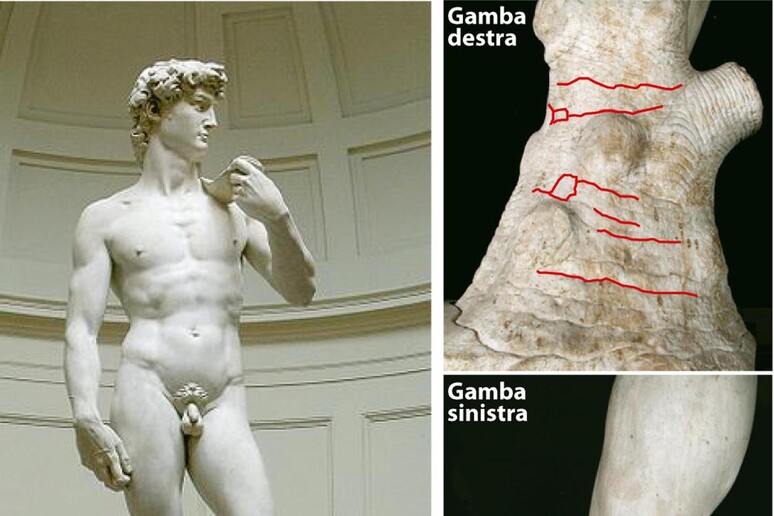Michelangelo's statue of David
risks toppling under its own weight, researchers in Florence
warned on Wednesday.
The National Research Council (CNR) and the University of
Florence sounded the alarm after performing tests on 10cm
plaster replicas of the statue inside a centrifuge, exposing
them to pressures stronger than the force of gravity.
Focus was centered on a series of micro-fractures on the
legs, whose ankles are allegedly too thin to support its 5,572
kilograms safely.
"Micro-fractures are visible in the left ankle and the
carved tree stump (that bears part of the statue's weight),
threatening the stability of the sculpture," said a CNR
statement, which was published in the Journal of Cultural
Heritage.
Experts have long warned that the statue's weight, pose and
poor-quality marble put it at risk in the event of an earthquake
or even successive rumblings from maintenance at its home in the
Accademia Gallery or road construction outside.
Florence has a recorded history of 127 minor quakes,
none of which topped five on the Richter scale.
In the past it has been suggested the the David should
be moved to an earthquake-proof underground room to protect
it from seismic activity.
There has even been a bid to move it to a purpose-built
site outside the city centre to relieve traffic congestion.
Visible cracks in the left ankle and in the tree stump have
shown a tendency to reappear after being covered up with
plaster.
The cracks in the statue's ankles are believed to have
developed because it spent over a century leaning forward
dangerously as it stood in the main city square.
In 1873, after 469 years in the elements during which
time its surface became rough and pockmarked, the David was
taken out of the elements and put in the Galleria
dell'Accademia.
A copy was erected on its original site - where some of
Florence's visitors take it for the real thing.
The statue was conceived by the Florentine governors who
commissioned it as an emblem of the city's pride and its
ability, despite its small size, to defend itself against
giants.
Michelangelo chiselled the marble for three years and
eventually created what came to represent the Renaissance
ideal of manhood. It was unveiled in Piazza della Signoria in
1504.
ALL RIGHTS RESERVED © Copyright ANSA











